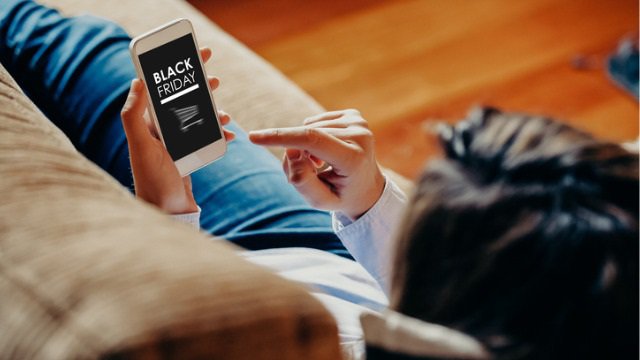COMMENTARY
Photo by iStock.com
By Trevor Sumner, CEO of PERCH
Thanksgiving is nearly here, as is one of retail’s biggest shopping events of the year: Black Friday. Brands have been pumping out special deals for the day leading up to the event with Amazon’s “Countdown to Black Friday” event already in play and Walmart already swinging out their Black Friday deals for gaming systems, smart devices and TVs.
As consumers walk through the doors of their favorite stores Nov. 23, what will the customer experience look like for consumers as they browse for potential purchases, and how will retailers fare in the aftermath? Below are some predictions for what we can expect on Black Friday, and what this means for retailers.
Digital media experiences will become a larger force in driving consumer engagement
Immersive, digital media experiences are becoming a larger force in driving consumer engagement, entertainment and product education in-store. For example, Nike recently opened its Nike NYC House of Innovation, providing members digitally-connected journeys with bookable sessions and the chance to shop for personalized products in-store. Lowes also provides shoppers with their Lowe’s Vision: In-Store Navigation, allowing customers to find their desired products in their appropriate aisles. With digital experiences such as these, retailers are gathering insights into shoppers’ in-store behaviors to help them better respond with marketing content that leads to increased engagement and opportunities to cross-sell and up-sell.
On Black Friday, there will be numerous limited release items dropping with various types of digital and physical activation strategies fighting for consumer attention. In-store, digital technologies like mobile will take off to streamline the hectic shopping experience as consumers try to avoid waiting in long lines.
According to a recent Forrester and Digimarc report, shoppers are more than willing to switch stores for faster checkouts, with long lines and poor checkout experiences being the third highest reason shoppers would go elsewhere, following location and price. Target is even offering their “skip the line” purchase option during the holiday, so shoppers can check out via their phones from any location in the store.
Additionally, sales associates will be using mobile apps to look up products, access customer information and checkout customers. They will also use these tools to communicate with customers in real-time as they shop online, extending more personal customer experiences over the web. Mobile shopping will be much bigger this year with shoppable Instagram, such as Macy’s personalized gift guides on Instagram, in addition to improved mobile and Apple Pay adoption. In short, convenience will rule on Black Friday.
Brick-and-mortar will remain king of holiday sales
Both brick-and-mortar shopping and online shopping will do very well, and Amazon will continue to take market share from other e-commerce players. Retailers with an integrated omnichannel strategy will do well as physical stores increase e-commerce activity by 37 percent. In total, according to eMarketer, total retail sales in the US during the holiday shopping season will increase 5.8 percent to $1 trillion. Let’s print that out properly — $1,000,000,000,000. Brick-and-mortar sales will jump 4.4 percent to $878.38 billion. And e-commerce sales will increase 16.6 percent to $123.73 billion. All in all, brick-and mortar will remain king as it is expected to represent 87.7 percent of all holiday sales.
Amazon’s brick-and-mortar locations will tank compared to other big-box retailers
Amazon, considered by most to be the king of retail, will not fare well in the physical retail space compared to the major big-box retailers. Their new 4-star locations lack innovation or excitement much like their book stores. According to Deloitte’s annual holiday retail survey, 19 percent of holiday shoppers plan to use innovative offerings such as seamless checkout, voice-assisted shopping, and virtual or augmented reality. AmazonGo is a convenience store and is unlikely to see a meaningful uptick in holiday traffic.
However, Whole Foods is the holiday dark horse, and may shine as Amazon better leverages the frequent touch-point of grocery to promote their most popular gifts and especially to drive demand of their white label products like Alexa. If Whole Foods expands to other popular pick up items like Apple’s AirPods and finds new ways to harvest data such as with their Whole Foods App, it could be a groundswell. Powered by data, Whole Foods could be the sleeper in the physical retail story of Amazon, even outside of grocery categories. Amazon will continue its holiday strength with e-commerce, but will be left asking themselves what they have learned from their brick-and-mortar failures this year.
In sum, digital experiences will excite and delight shoppers this year while streamlining the hectic in-store shopping experience. E-commerce will continue to rise as one of the preferred holiday shopping methods, but shoppers will still go to the tried and true brick-and-mortar locations to purchase their gifts this year and enjoy the experience and serendipity of shopping for loved ones. Amazon will reap profits online, but their 4-star stores might see some diminished shine this holiday season. With consumers’ increased reliance on mobile and the convenience that it brings, retailers should be prepared to deliver efficiency in-store to this year’s shoppers.
Topics: Assisted Selling, Augmented Reality, Consumer Behavior, Customer Experience, Department Stores, eCommerce, Marketing, Omnichannel / Multichannel, Technology, Trends / Statistics
Sponsored Links:

